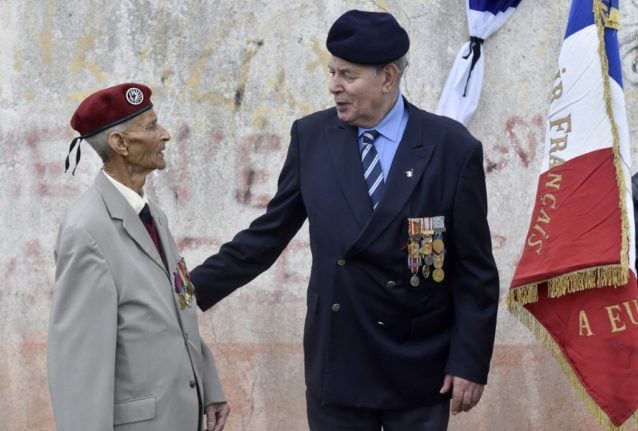“Finally hit the ‘Big B’ (Berlin). Target visual. Flak not quite intense. Visibility good. Lots of damage. Rail yards a mass of bomb craters. Mission lasted 7½ hours. All went well. One flak hole.” – March 18, 1945
As a 20-year-old US Army Air Force radio gunner on a B-24 bomber when I scribbled that diary note, I never dreamed I’d be returning to Berlin nearly 68 years later on another mission – this time as a tourist with my wife. Our aim: to see the city’s amazing resurgence and impact on Jewish life.
We were not disappointed.
From the Baltic Sea port of Warnemünde, where our cruise ship docked, it was a dull, three-hour, 170-mile train ride to the German capital with fleeting views of green fields, farms, domestic animals and working windmills. Rolling along the countryside, thoughts intermittently came back to me.
As our 466th Bombardment Group Squadron peppered an area of the city with thousand-pound bombs from 22,000 feet up, all I could see were puffs of smoke amidst what appeared to to be a sea of bomb craters. The railyard was flattened.
Arriving in Berlin, I couldn’t help wondering if the station was built atop the tracks we had hit that March day in 1945.
The city’s tortured East-West division wasn’t immediately evident except for a portion of the Berlin Wall retained for history’s sake. More than half of its buildings were leveled in World War II, but almost everywhere today shiny new structures co-exist with old landmarks.
Berlin today is a pulsating city of 3.5 million, nine times the physical size of Paris, with more bridges than Venice – and a horrific past.
Watching thousands of well-dressed, seemingly busy Germans scurry by, I felt pangs seeing some offer a friendly smile or nod, knowing they could be the descendants of former enemies whose homes and lives our bombs possibly destroyed.
Billed as “Echoes of the Past”, highlights of our 13-hour tour included a visit to Europe’s largest Jewish Museum and lunch in its restaurant with a name similar to mine, Lieberman.
We also stopped at an abandoned Jewish cemetery, the gravesite of Germany’s Socratic philosopher Moses Mendelssohn, a gold-domed synagogue and a vast Holocaust Memorial right next to the Brandenburg Gate, the symbol of German reunification, and its nearby Reichstag parliament building.
As someone whose European relatives shared the fate of six million Jews murdered by the Nazis, it was an emotional and exhausting day, but also a surprisingly encouraging experience.
Seeing scores of mostly serious young Germans awaiting entry and inside the huge Jewish Museum was unexpected for me. The odd-shaped, zinc metal-coated building with the zig-zag, narrow window lines symbolizing a fractured Star of David was designed by Daniel Libeskind, the original designated master planner of Manhattan’s World Trade Center. It’s strategically located near a field that was the site of Gestapo headquarters.
Signs of Jewish history and culture are everywhere in Berlin, said our guide, Markus, a 36-year-old, West Berlin-born professional. Confiding he has Jewish relatives, he cited streets named after prominent Jews – Mendelssohn, Baruch Spinoza, Gustav Mahler. And to see a pedestrian near the Brandenburg Gate wearing a yarmulke, the skull cap worn by religious Jews, was reassuring.
Once estimated at nearly 200,000, the German capital’s Jewish population was less than a thousand when World War II ended. Since then, more than 30,000 Jews have settled here, many from the former Soviet Union.
Elsewhere in the city, Holocaust reminders appear on some streets as engraved plaques and cobblestones, identifying victims who had lived nearby.
A huge Holocaust memorial opened several years ago in the heart of Berlin within view of the Brandenburg Gate and Reichstag parliament building. It’s comprised of rows of concrete casket-like pillars, 2,711 in all, covering three acres like a cemetery. In an area across the street is the relatively new fortress-like US Embassy
Seven synagogues, Jewish pre-schools, a high school and a Yeshiva-like college operate in the city, Markus pointed out. A few kosher restaurants are in business near the restored eye-catching New Synagogue. The 1866 Moorish-styled edifice, ruined by rampaging Nazi adherents on Kristallnacht in 1938 and then by Allied bombers, has been restored. It serves as a Jewish museum and area community centre.
Before boarding the train at a Spandau-area station to return to our ship, I paused to consider how much had grown from the destruction I was part of seven decades ago.



 Please whitelist us to continue reading.
Please whitelist us to continue reading.
Member comments